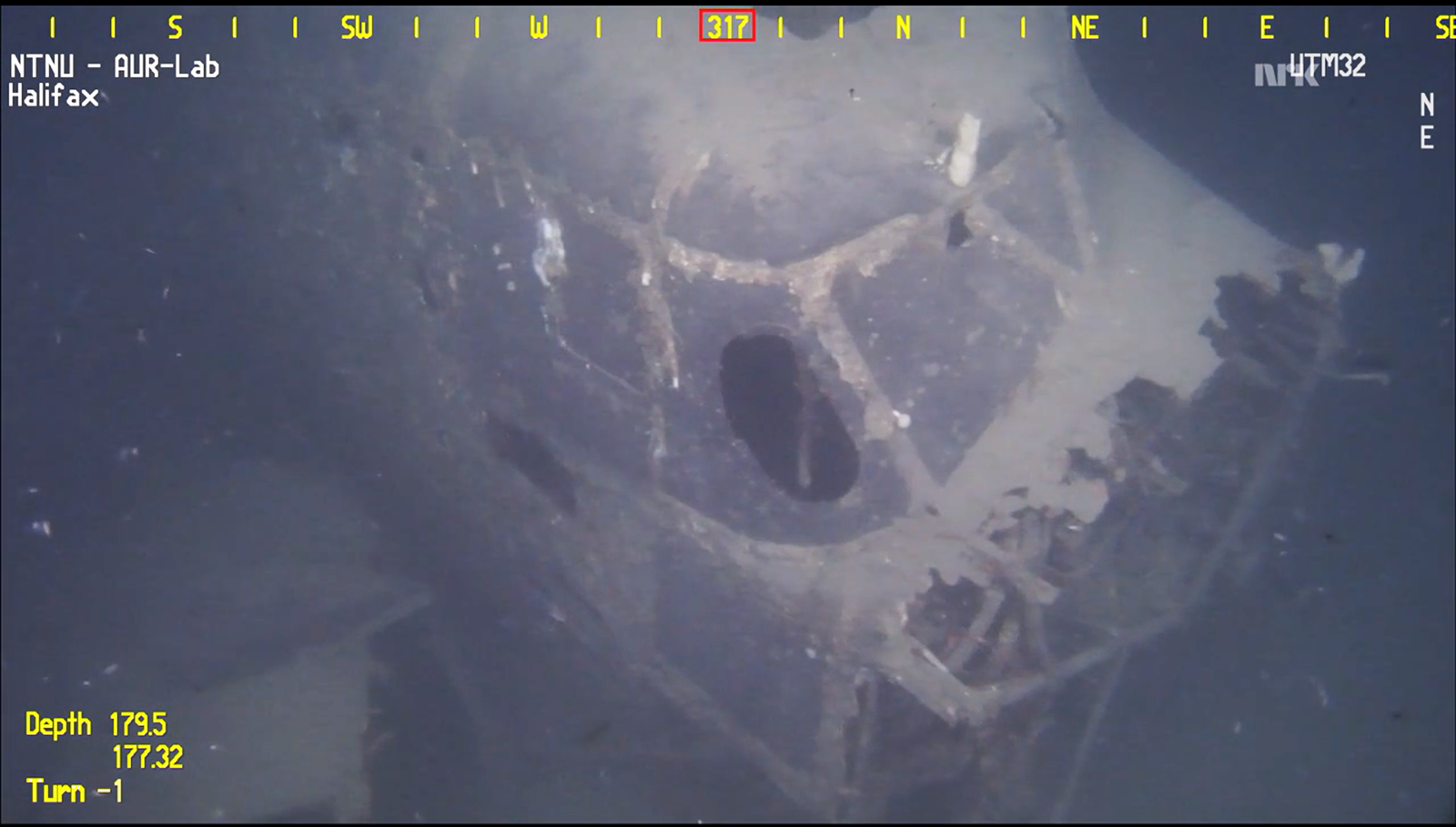
A research team from the Marine Technology Center at the Norwegian University of Science and Technology in Trondheim, Norway has discovered the sunken wreck of an RAF Handley Page Halifax under roughly 180m of water on the bottom of a nearby fjord. Six engineering students were involved in the project, which involved studying historical details and a great deal of planning from how to conduct the search. As with almost all undersea search projects, there is usually a lot of failure before a successful conclusion. When the students guided their small remote submersible down to the wreck, they let out a huge cheer when she appeared in view. They have conducted a thorough survey of the remains, which they captured on video.
While the aircraft appears to be remarkably straight, it’s clear that the saltwater in the fjord has eaten away at the skin. That being said, there is still a lot of potential for a future recovery project. The university will pass along their findings to the Norwegian Air Force Museum in Bodø, who are said to be very excited by the discovery.
The Halifax, one of the primary four-engined heavy bombers in the Royal Air Force’s Bomber Command, is extraordinarily rare today, with just two more or less complete survivors, and another reconstructed around the rear fuselage of a crashed example and the wings from a Handley Page Hastings. Two of the three survivors also came from underwater crash sites in Norwegian waters. Judging by the fact that recently discovered aircraft has Merlin engines with wooden propellers, it is almost certainly a Halifax Mk.II, and therefore very likely W7656 of 35 Squadron, lost on April 26th, 1942 while on a mission to attack the German battleship Bismarck. Sadly two crewmen, Sgt.A.B.Columbine (navigator) and Sgt.A.W.S.Evans (W/Op & Gunner), perished in the crash. It was the crew’s third attack against the Tirpitz. More details on the raid can be found HERE.
[inpost_galleria thumb_width=”200″ thumb_height=”200″ post_id=”15777″ thumb_margin_left=”3″ thumb_margin_bottom=”0″ thumb_border_radius=”2″ thumb_shadow=”0 1px 4px rgba(0, 0, 0, 0.2)” id=”” random=”0″ group=”0″ border=”” show_in_popup=”0″ album_cover=”” album_cover_width=”200″ album_cover_height=”200″ popup_width=”800″ popup_max_height=”600″ popup_title=”Gallery” type=”yoxview” sc_id=”sc1414202270256″]


























